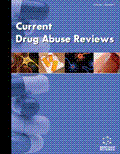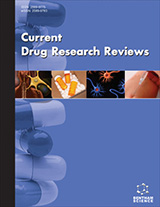Abstract
Research has revealed inconsistencies regarding the relationship between social anxiety and alcohol use. The goal of the current review is to examine lab-based studies that have been conducted in an attempt to help disentangle the social anxiety – alcohol link. Specifically, this review focuses on the most prominent theories present in this area of research, namely, the Tension Reduction Theory, the Stress-Response Dampening Model, the Self-Awareness Model, the Attention Allocation Model, and the Appraisal-Disruption Model. The review then describes the empirical studies that have been conducted to test predictions derived from each of these theories. This is followed by a discussion of some methodological considerations in this area of research, including an examination of participant characteristics, study selection criteria, alcohol administration procedures, the nature of the anxiety-inducing tasks that have been used in this area of research, and the different types of outcome measures that are typically used to measure social anxiety. The review ends with some tentative conclusions and directions for future research, including recommendations to recruit individuals with high levels of trait social anxiety, to closely monitor blood alcohol levels achieved at different time points during the study, to examine more interaction-based social anxiety provoking tasks, and to employ a wider range of outcome measures (e.g., cognitive and behavioural outcomes relevant to social anxiety).
Keywords: Social anxiety, alcohol, comorbidity, experimental studies, tension-reduction, social phobia, stress-response dampening, self-awareness
Current Drug Abuse Reviews
Title: A Critical Review of Laboratory-Based Studies Examining the Relationships of Social Anxiety and Alcohol Intake
Volume: 3 Issue: 1
Author(s): Susan R. Battista, Sherry H. Stewart and Lindsay S. Ham
Affiliation:
Keywords: Social anxiety, alcohol, comorbidity, experimental studies, tension-reduction, social phobia, stress-response dampening, self-awareness
Abstract: Research has revealed inconsistencies regarding the relationship between social anxiety and alcohol use. The goal of the current review is to examine lab-based studies that have been conducted in an attempt to help disentangle the social anxiety – alcohol link. Specifically, this review focuses on the most prominent theories present in this area of research, namely, the Tension Reduction Theory, the Stress-Response Dampening Model, the Self-Awareness Model, the Attention Allocation Model, and the Appraisal-Disruption Model. The review then describes the empirical studies that have been conducted to test predictions derived from each of these theories. This is followed by a discussion of some methodological considerations in this area of research, including an examination of participant characteristics, study selection criteria, alcohol administration procedures, the nature of the anxiety-inducing tasks that have been used in this area of research, and the different types of outcome measures that are typically used to measure social anxiety. The review ends with some tentative conclusions and directions for future research, including recommendations to recruit individuals with high levels of trait social anxiety, to closely monitor blood alcohol levels achieved at different time points during the study, to examine more interaction-based social anxiety provoking tasks, and to employ a wider range of outcome measures (e.g., cognitive and behavioural outcomes relevant to social anxiety).
Export Options
About this article
Cite this article as:
Battista R. Susan, Stewart H. Sherry and Ham S. Lindsay, A Critical Review of Laboratory-Based Studies Examining the Relationships of Social Anxiety and Alcohol Intake, Current Drug Abuse Reviews 2010; 3 (1) . https://dx.doi.org/10.2174/1874473711003010003
| DOI https://dx.doi.org/10.2174/1874473711003010003 |
Print ISSN 1874-4737 |
| Publisher Name Bentham Science Publisher |
Online ISSN 1874-4745 |
 56
56Related Articles
-
Evolutionary Considerations on the Emerging Subculture of the E-psychonauts and the Novel Psychoactive Substances: A Comeback to the Shamanism?
Current Neuropharmacology Versatility of Cancer Associated Fibroblasts: Commendable Targets for Anti-tumor Therapy
Current Drug Targets Relationship Between Gyrification and Functional Connectivity of the Prefrontal Cortex in Subjects at High Genetic Risk of Schizophrenia
Current Pharmaceutical Design A Computational Prediction of Conserved MicroRNA Targets of Ion Channels in Vertebrates
Current Bioinformatics Role of CYP2E1 in Mitochondrial Dysfunction and Hepatic Injury by Alcohol and Non-Alcoholic Substances
Current Molecular Pharmacology Microbial Biofilms: Impact on the Pathogenesis of Periodontitis, Cystic Fibrosis, Chronic Wounds and Medical Device-Related Infections
Current Topics in Medicinal Chemistry Editorial: Upwards and Downwards: Advancing Knowledge in Adolescent Psychiatry
Adolescent Psychiatry Th17 Cells in Airway Diseases
Current Molecular Medicine Therapeutic Interventions for the Suppression of Alzheimer’s Disease: Quest for a Remedy
Current Drug Metabolism Nanoparticle Based Gene Therapy Approach: A Pioneering Rebellion in the Management of Psychiatric Disorders
Current Gene Therapy Network Building of Proteins in a Biochemical Pathway: A Computational Biology Related Model for Target Discovery and Drug-Design
Current Bioinformatics Erythropoietin and mTOR: A “One-Two Punch” for Aging-Related Disorders Accompanied by Enhanced Life Expectancy
Current Neurovascular Research Fetal Alcohol Syndrome: A Cautionary Note
Current Pharmaceutical Design Chemistry and Effects of Brainstem Acting Drugs
Central Nervous System Agents in Medicinal Chemistry The Natural History and Diagnosis of Nicotine Addiction
Current Pediatric Reviews Recent Advances in the Development of Amyloid Imaging Agents
Current Topics in Medicinal Chemistry Incidence of Type 2 Diabetes Among Patients Exposed to the Combination of Pravastatin and Paroxetine
Current Drug Safety Designing a Novel Multi-Epitope Vaccine Against Htlv-1 Related Adult T-cell Leukemia/Lymphoma: An In Silico Approach
Current Proteomics Mice Brain Nitric Oxide Synthase Response Induced by Anaesthetics and Other Porphyrinogenic Drugs
Drug Metabolism Letters Protein Misfolding and Aggregation in Alzheimer's Disease and Type 2 Diabetes Mellitus
CNS & Neurological Disorders - Drug Targets
















